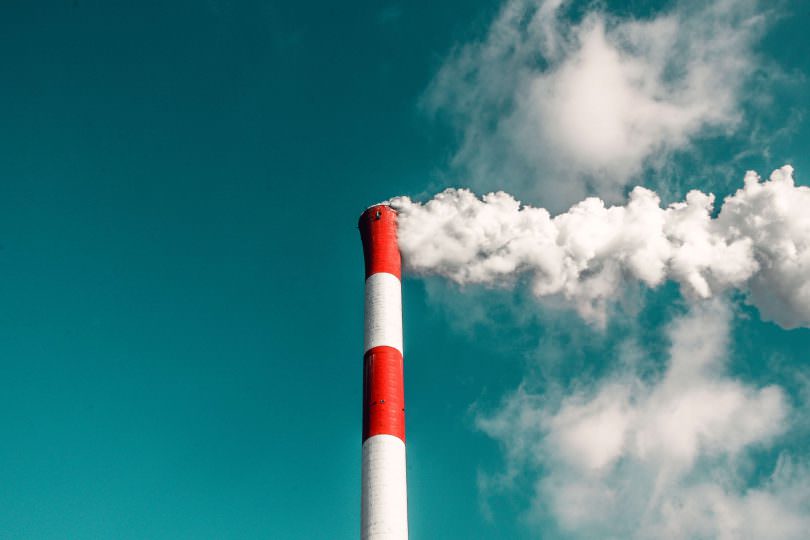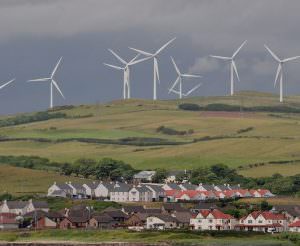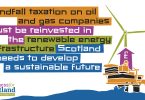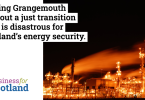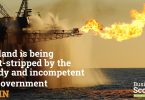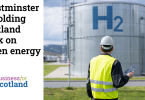This has been one of the hottest summers on record, and it brings the issue of climate change to the front of our minds. Mainland Europe has been experiencing temperatures in the mid-40s, Spain 44C, Portugal 46C, and the European record of 48C (Athens) was threatened.
In Scotland 33C was recorded but meteorologists refused to call it a record because a van near the weather station was running its engine, spewing out carbon monoxide, hydrocarbons, particulate matter and nitrogen oxides, and that may have artificially raised the temperature – ironic beyond belief.
The heatwave is global. Sydney is roasting, with a drought declared in New South Wales. Every major landmass is warmer than average – nations as diverse as Algeria, Japan and Scandinavia amongst the worst affected.
This has resurrected the global warming debate and although one hot summer doesn’t make a trend, there is a clear trend. The problem is that most people understand the weather they are experiencing in the moment, but not longer term climate change. Weather is what is outside our window right now – it’s highly changeable, difficult to predict and we think of it in the short term.
We cannot personally sense climate change because our own weather experiences are too limited. That doesn’t stop President Trump denying climate change on Twitter every time he feels a chill though. Climate change is the average temperature of the entire planet mapped out over an extended period of time, and that shows the earth is getting hotter in a very predictable way.
It’s true that Earth’s climate is always changing, but historical change was due to fluctuations in natural systems, volcanic eruptions, etc, and major changes usually took thousands of years. However, since the industrial revolution, additional CO2 emissions have exacerbated global warming. So the weather in 100 days is almost impossible to predict but the climate in 100 years is fairly predictable.
CO2 is a natural gas: we cause it by breathing and plants need it to survive, so it is created and absorbed naturally. As CO2 emissions increase over time the planet responds and the natural CO2 cycle reaches equilibrium.
However, the natural land and ocean CO2 absorption system has only managed to deal with about 40% of man-made CO2 and the 60% that isn’t absorbed means CO2 levels in the atmosphere have hit the highest point of the past 15 to 20 million years. A natural change of 100ppm (parts per million, water) is normally built up over 10,000 to 20,000 years. The recent increase of 100ppm has taken just 120 years since the industrial revolution got into full swing.
When sunlight reaches Earth it passes through its atmosphere and warms the planet’s surface before being reflected back towards space. The greenhouse gas layer (water vapour, smaller amounts of CO2, nitrous oxide and nitrogen) acts as a thermal blanket warming the surface of the earth. If it didn’t, Earth would be a cold, lifeless planet.
However, if the greenhouse layer becomes too effective the planet will become too hot for life. Not too hot, not too cold – just right – the Goldilocks range is where we need to keep it, and the chances are at some point in the next few generations life will become very difficult unless we act now.
Now, there are three types of people that really annoy me when it comes to discussing climate change. You would expect me to say climate change deniers, who point to the few scientists who have doubts about the man-made nature of change – though 97% of scientists agree human industrial activity is speeding up change and when you get more than 70% of scientists agreeing on something the debate should be over.
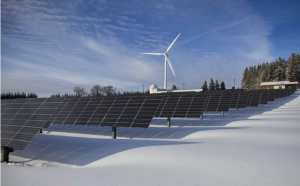
Solar power not just for hot countries
I also don’t like the hyperbolic “we only have 10 years to save the world and we all need to stop driving cars and become vegans” crowd. If they are right we are all dead anyway, and may as well party like it’s 1999. Humans can’t change that quickly unless faced by an immediate, visible catastrophe, and that’s not happening yet (or at least not visibly to the masses)..
The final group I can’t stand are politicians that think the economy is more important than the planet. They say the economic cost of limiting our emissions is too much, ignoring the science for reasons of corporate and self-interest.
Let’s examine the balance of risks though. What if we act but didn’t need to; invest in carbon capture, reduce our CO2 emissions, legislate against wasteful plastic use, stop polluting, and, on a personal level, eat less meat, consume less, throw away less plastic, reuse and recycle so we can be sure to maintain the goldilocks range?
[Read more: Go green, save money and improve your health – even if you don’t think the planet needs saved]
Economic growth may slow and government expenditure on the environment will have to increase significantly, but in the long term, sustainable development won’t mean spending more on mitigating a global warming crisis. If in the future we find the 97% are wrong and we didn’t need to do anything – the planet can heal itself – then we will have spent some money we didn’t need to, but we will have a cleaner planet and a healthier human race with cleaner air to breathe and cleaner oceans – not too much of a downside.
But what if we do nothing when we did need to act? Then we pass the tipping point and mass drought leads to mass starvation and a mass migration that will make the current refugee crisis look like a drop in the ocean. Food and water shortages, in the midst of international resource wars and the mass extinction of major species we reply upon to survive (bees etc), all whilst the human race clings on by eating algae and drinking desalinated water in underground cities.
When you compare the worst-case scenarios of acting but the sceptics were right (3% likelihood) and not acting but the climate scientists were right and global warming is exacerbated by human pollution (97% likelihood) then surely the argument is over, because we can’t afford to be wrong on one of the scenarios.
Let’s turn Scotland’s world-leading energy expertise and our massive renewable energy (especially tidal and wave energy potential) into a massive economic opportunity and show the world what a sustainable future looks like – in other words, let’s be a different country.

